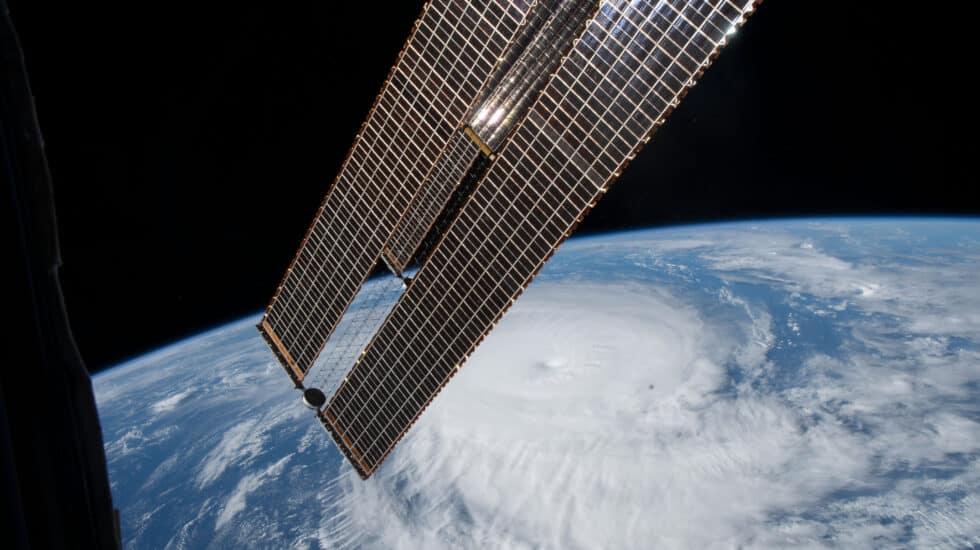

Image of Cyclone Freddy northeast of Mauritius from the International Space Station on February 20, 2023
This Wednesday magazine Nature published a landmark study. After three years of research, 40 scientists from different disciplines managed to quantify the “limits of the Earth system”. That is, at what point all living beings can inhabit without harming the planet and without causing the collapse of the entire system. To do this, they took as a basis five scales (which they call “fields”): climate, biosphere, water, fertilizers and nutrients. And the conclusions they draw are not encouraging, as they claim that “most of these limits have already been violated.”
We have chosen these five areas because are among the most important for maintaining the earth system and because we were able to get the data we needed,” explains Noelia Zafra, a researcher at the Basque BC3 Climate Research Center who took part in the study. “I am optimistic that this particular study could lead to very important advances. We have seen this in other cases before, for example, when agreements were reached to restore the ozone layer,” he adds.
Zafra specifies that to find these limits, two concepts were used. The first is “security”, which explains that they define it as “the minimum level at which the earth system does not collapse and people and other living beings can live on it.” And the second term is the term “fairness”, which, while explaining its complexity, defines it as “the minimum that humans need from these systems in order to survive as a species and be able to have a minimum of well-being.” -existence”. The most striking example is to have enough water and food for everyone.
The study itself warns that people “are taking enormous risks with the future of civilization and all creatures living on Earth.” And that planetary health, according to the data collected by scientists, is clearly undermined. Nine of the eleven limits they set have already been violated. And the risk of inaction now could make change irreversible.
Johan Rockström, lead author of the study and director of the Potsdam Institute for Climate Change Impact Research, explains: “If the transformation does not happen in time, it is very likely that the intersection will become inevitable. critical points of irreversible change and hence the wide-ranging impact on human well-being. Avoiding this scenario is essential if we are to guarantee a secure and fair future. for present and future generations.
“The current situation in which we are all suffering. As the Earth itself, and other species of animals and people. But I think we notice it the most. Perhaps those of us who live in Western societies notice this less. But there are a lot of people who really have a hard time covering their daily needs,” says Zafra.
There are already companies, some NGOs, and even entire cities that are using the data from this study to find out what restrictions they should comply with. But it’s one thing, and another to extrapolate it to the whole world, as Zafra explains: “I’m quite optimistic that it can be implemented and applied in a more real way. But it is true that under the existing system It’s hard for me to implement this on a planetary scale. I still hope it happens.”
Safe and Fair Earth System Boundaries
Climate
- Safe: 1.5°C to avoid the high likelihood of multiple climate hotspots.
NOT YET DISTURBED - Satisfactory: 1 ° C to avoid strong exposure to significant damage from changes
climate. BREAK AT 1.2°C - safe and honest: 1°С
Biosphere
- Global pristine nature: at least 50-60% of the surface of the natural ecosystem (safe and fair). 45-50% DISTURBANCE
- Locally managed nature: at least 20-25% natural ecosystems per square kilometer (safe and fair). DISTURBED ON TWO-THIRD OF THE EARTH’S SURFACE DOMINATED BY HUMAN ACTIVITIES
- safe and honest (untouched global nature): >50-60% of natural ecosystem surface
- safe and honest (local governance nature): >20-25% natural ecosystems per km2
Water
- Surface water: 20% monthly runoff change (safe and satisfactory).
TRANSGRESS ON 34% OF THE WORLD’S SURFACE - Groundwater: Annual runoff is less than recharge (safe and fair). TRANSGRESS ON 47% OF THE WORLD’S SURFACE
- safe and honest (surface water): monthly runoff change <20%
- safe and honest (groundwater): Drawdown ≤ Replenishment
Nutrient cycles (fertilizers)
- Nitrogen:
- Certainly: <2.5 mg N/l in surface water and <5-20 kg N/ha/yr in soil (local); 61 TgN/year surplus (global) – TRANSITION UP TO 119 TgN/year
- Fair: same as Safe plus drinking water <11.3 mgNO3-N/l (local); 57 TgN/year of surplus (global). VIOLATED by 119 tenge/year
- Correspond:
- Certainly: 50-100 mgP/m3 (local concentration in fresh water); 4.5-9 TgP/year (global surplus). VIOLATED BY 10 TgP/year
- Fair: Same as Safe, plus any additional local rules. VIOLATED by 10 TgP/year
- safe and honest (nitrogen): <57 TgN/year (global)
- safe and honest (phosphorus): Excess <4.5–9.0 TgP/yr (global)
pollutant aerosols
- Global: 0.15 hemispheric mean annual difference in ODA (safe). 0.05 NOT VIOLATED
- Local: 0.25 aerosol optical depth (-AOD-) to avoid monsoon change (safe). 15 µg/m3 PM2.5 to avoid high potential for harm to human health (satisfactory).
- safe and honest (global): 0.15 hemispheric mean annual difference ODA (insurance)
- safe and honest (local): 15 µg/m3 PM2.5
Source: El Independiente